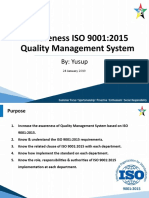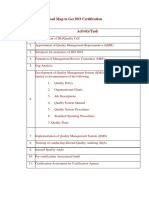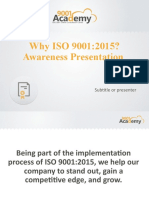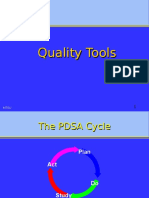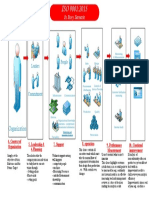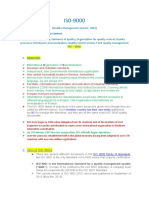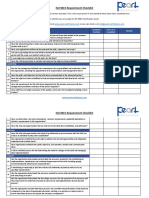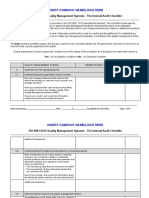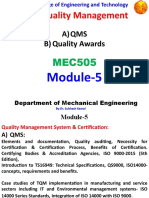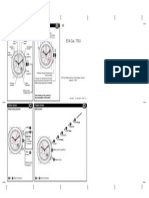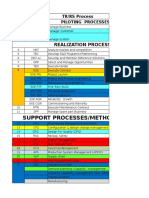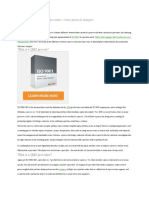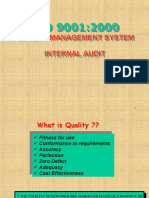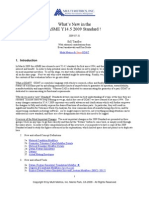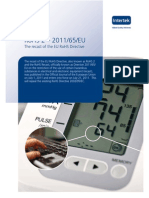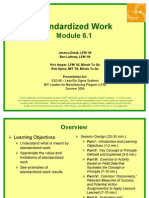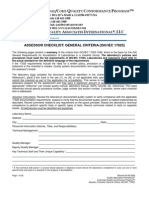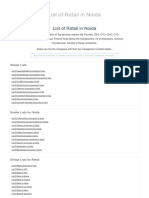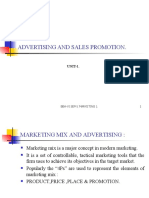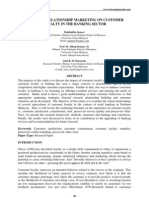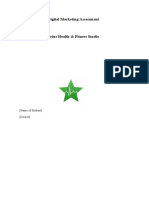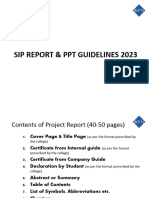ISO 9001:2008 Practical Guidance to Implementation
By: Andy Hofmann, President International Certification Services Inc.
�Presentation Objectives
Overview of ISO 9001:2008 Commitment Required by Organization Keys to successful implementation
�ISO 9001:2008 - Overview
�A Quality System:
Formalizes the processes within the organization which are so important to meet the business objectives that they need a systematic approach. Say what you do!
Documented Quality System
Do what you say! Document what youve done! Measure the difference! Act on it!
Corrective Action Measurement and Review
Audit / Check
�Business Process Flow
Quality Management System Continual Improvement Management Responsibility
Continuous Improvement Cycle
C U S T O M E R
R e q u i r e m e n t s
Resource Management
Measurement, Analysis, Improvement Product and/or Service Realization
Input
Output
A P C D
S a t i s f a c t i o n
C U S T O M E R
Quality Management System
�Structure of ISO 9001
Based on a Plan-Do-Check-Act Business Process
Model Organized into Five Major Clauses:
4.0 Quality Management System (general requirements, documentation requirements, quality manual, control of documents and records) 5.0 Management Responsibility (policy, objectives, planning, customer focus, QMS, management review) 6.0 Resource Management (human resources, facilities, work environment) 7.0 Product and/or Service Realization (contract, design, purchasing, production, calibration) 8.0 Measurement, Analysis and Improvement (monitoring, audit, control of NC, continual improvement, customer satisfaction)
�Summary of Requirements
Items that your QMS must document:
Policy Control of Documents Control of Records Internal Audits Nonconformance Control Corrective Action Preventive Action Processes and Procedures required to control work
�ISO 9001:2008 Implementation Commitment
�Implementation Commitment
Full support by Top Management Implementation is planned, consistently communicated and appropriate training provided Regular review of progress - audit Successes are identified and celebrated Maximum use is made of existing methods
�Implementation Commitment
Establishment of organizational direction through policy Setting of objectives and targets Definition of metrics Provision of resources and removal of road blocks Assessment of customer risk Consistent reinforcement of positives Resources to resolve nonconformances
�Implementation Commitment
Establishment of direction through policy - Strategic framework for the organization - Commitment to customer and stakeholders - Framework for measurement and improvement
�Implementation Commitment
Setting of Objectives and Targets - Linked to customer needs - Measurable and Meaningful - Risk Based
�Implementation Commitment
Metrics - Monitoring direct measurables - Monitoring of audits of processes - Monitoring of customer indicators - Action when different from plan
�Implementation Commitment
Resources - Adjustment where metrics indicate - Recognition and removal of road blocks to improvement - Measurement of Improvement - Review of Strategy for continued fit
�Implementation Commitment
Assessment of Customer Risk - Identification of key needs, past and future - Review of delivery systems and personnel - Optimization of resources to consistently deliver against needs
�ISO 9001:2008 Keys to Success
�Keys to Success
Map your processes Maximum use of existing systems Assign ownership of process steps Identify sub-processes and controls/procedures Obtain management direction for policy, goals, targets and metrics Training, Training, Training React to measures
�Keys to Success
A time line for activities usually six to 18 months A focus point, someone responsible to encourage each stakeholder Regular status meetings with Senior Management Regular communication on progress to everyone An external resource to assist with interpretations
�Keys to Success
Have Fun!
�Keys to Success
Quotation: You do not have to do this; Survival is not compulsory !
Dr. W. Edwards Deming
